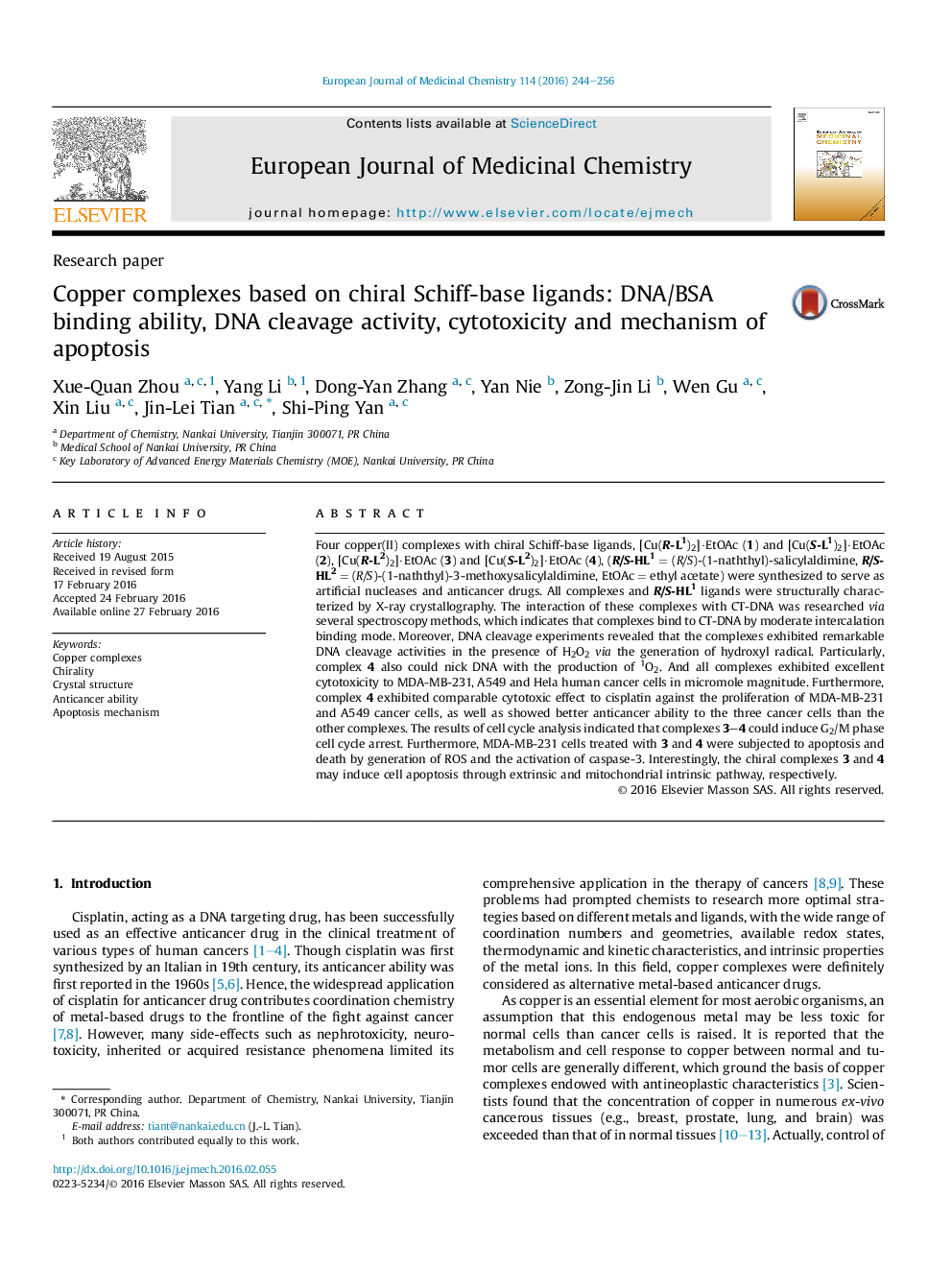| کد مقاله | کد نشریه | سال انتشار | مقاله انگلیسی | نسخه تمام متن |
|---|---|---|---|---|
| 1398647 | 1501102 | 2016 | 13 صفحه PDF | دانلود رایگان |

• Four mononuclear copper(II) complexes with chiral Schiff-base ligands were synthesized and characterized.
• These complexes exhibited excellent anticancer ability with IC50 values in micromole magnitude.
• Chiral enantiomers 3 and 4 induced cancer cell apoptosis via different pathway.
Four copper(II) complexes with chiral Schiff-base ligands, [Cu(R-L1)2]·EtOAc (1) and [Cu(S-L1)2]·EtOAc (2), [Cu(R-L2)2]·EtOAc (3) and [Cu(S-L2)2]·EtOAc (4), (R/S-HL1 = (R/S)-(1-naththyl)-salicylaldimine, R/S-HL2 = (R/S)-(1-naththyl)-3-methoxysalicylaldimine, EtOAc = ethyl acetate) were synthesized to serve as artificial nucleases and anticancer drugs. All complexes and R/S-HL1 ligands were structurally characterized by X-ray crystallography. The interaction of these complexes with CT-DNA was researched via several spectroscopy methods, which indicates that complexes bind to CT-DNA by moderate intercalation binding mode. Moreover, DNA cleavage experiments revealed that the complexes exhibited remarkable DNA cleavage activities in the presence of H2O2via the generation of hydroxyl radical. Particularly, complex 4 also could nick DNA with the production of 1O2. And all complexes exhibited excellent cytotoxicity to MDA-MB-231, A549 and Hela human cancer cells in micromole magnitude. Furthermore, complex 4 exhibited comparable cytotoxic effect to cisplatin against the proliferation of MDA-MB-231 and A549 cancer cells, as well as showed better anticancer ability to the three cancer cells than the other complexes. The results of cell cycle analysis indicated that complexes 3–4 could induce G2/M phase cell cycle arrest. Furthermore, MDA-MB-231 cells treated with 3 and 4 were subjected to apoptosis and death by generation of ROS and the activation of caspase-3. Interestingly, the chiral complexes 3 and 4 may induce cell apoptosis through extrinsic and mitochondrial intrinsic pathway, respectively.
Chiral enantiomers 3 and 4 induced cancer cell apoptosis via different pathway.Figure optionsDownload as PowerPoint slide
Journal: European Journal of Medicinal Chemistry - Volume 114, 23 May 2016, Pages 244–256